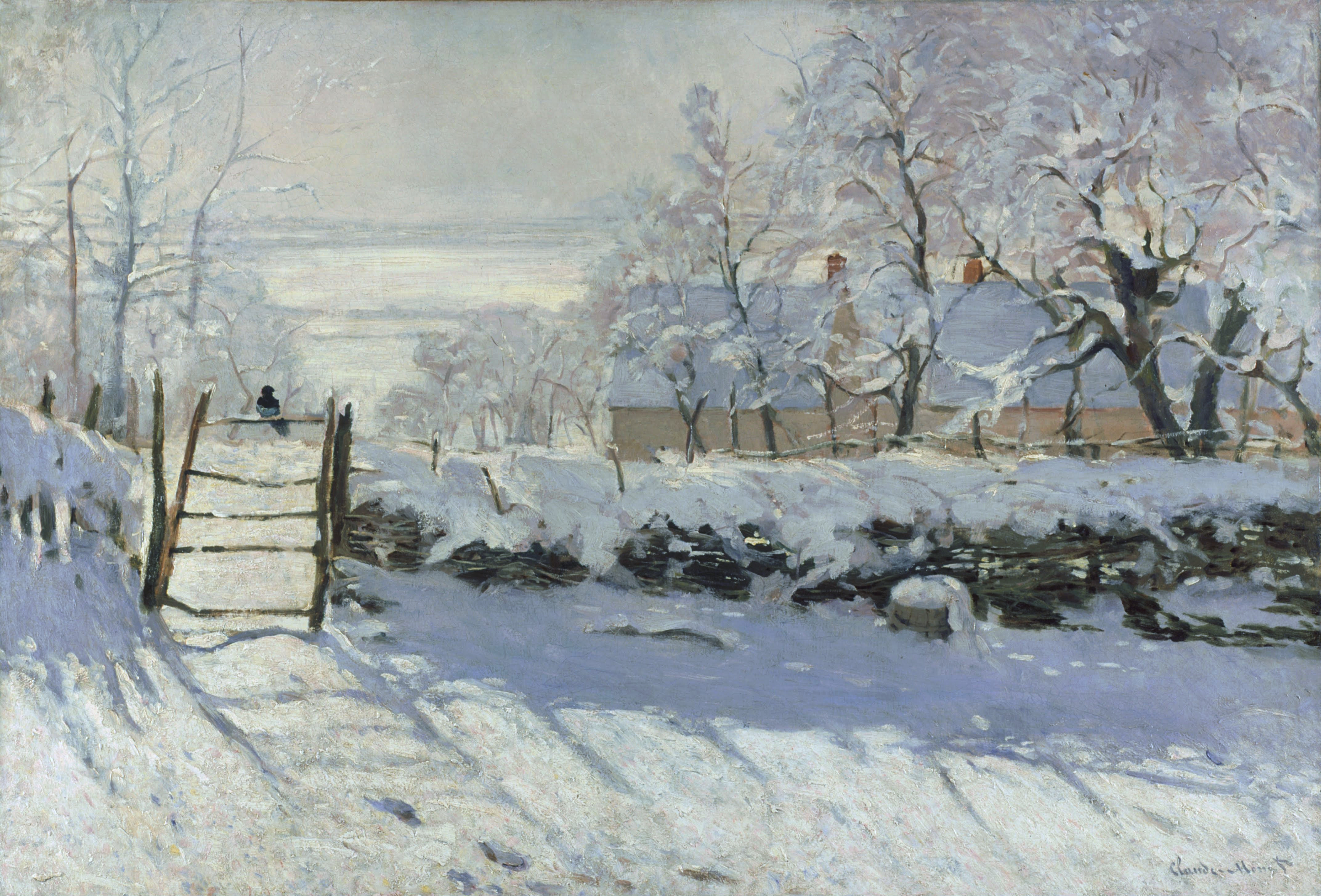The Magpie is considered one of Monet's best snowscape paintings of approximately 140 snowscapes painted by the artist. It was created during the winter of 1868–1869 near the commune of Étretat in Normandy. Monet's patron, Louis Joachim Gaudibert, helped arrange a house in Étretat for Monet's girlfriend Camille Doncieux and their newborn son, allowing Monet to paint in relative comfort, surrounded by his family.
Between 1867 and 1893, Monet and fellow Impressionists Alfred Sisley and Camille Pissarro painted hundreds of landscapes illustrating the natural effect of snow (effet de neige). Similar winter paintings of lesser quantity were produced by Pierre-Auguste Renoir, Gustave Caillebotte, and Paul Gauguin. Art historians believe that a series of severe winters in France contributed to an increase in the number of winter landscapes produced by Impressionists.
The painting features one of the first examples of Monet's use of colored shadows, which would later become associated with the Impressionist movement. This innovative use of light and color led to its rejection by the Paris Salon of 1869.




Magpie
oil on canvas • 89 cm × 130 cm
 Claude Monet
Claude Monet